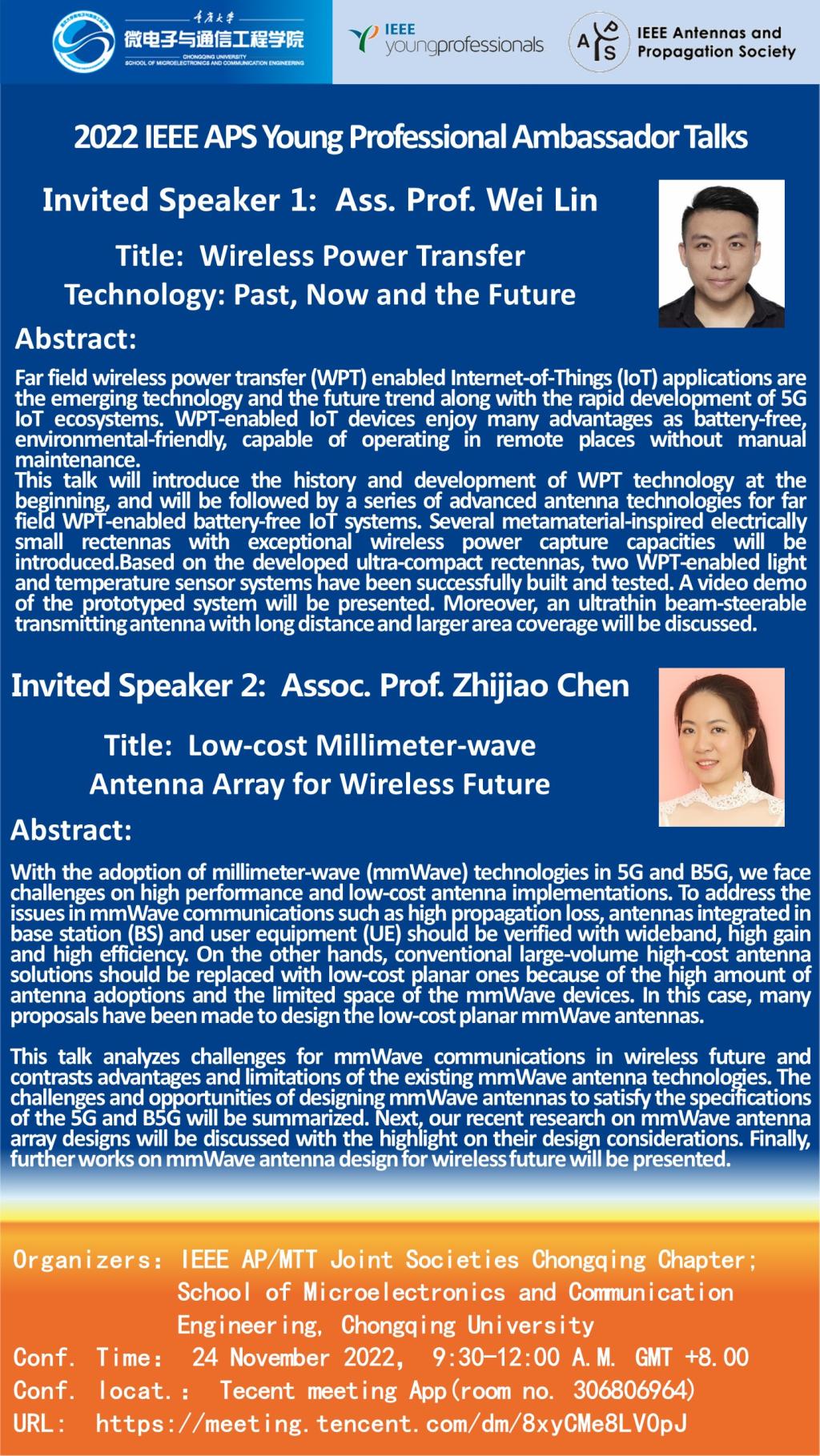Invited Speaker 1: Ass. Prof. Wei Lin
Title: Wireless Power Transfer
Technology: Past, Now and the Future
Abstract:
Far field wireless power transfer (WPT) enabled lnternet-of-Things (loT) applications are the emerging technology and the future trend along with the rapid development of 5G loT ecosystems. WPT-enabled lot devices enjoy many advantages as battery-free environmental-friendly, capable of operating in remote places without manual maintenance.
This talk will introduce the history and development of WPT technology at the beginning, and will be followed by a series of advanced antenna technologies for far field WPT-enabled batterv-free loT systems. Several metamaterial-inspired electrically small rectennas with exceptional wireless power capture capacities will be introduced. Based on the developed ultra-compact rectennas two WPT-enabled light and temperature sensor systems have been successfully built and tested, A video demo of the prototyped system will be presented. Moreover, an ultrathin beam-steerable transmitting antenna with long distance and larger area coverage will be discussed.
Invited Speaker 2: Assoc. Prof. Zhijiao Chen
Title: Low-cost Millimeter-wave
Antenna Array for Wireless Future
Abstract:
With the adoption of millimeter-wave (mmWave) technologies in 5G and B5G, we face challenges on high performance and low-cost antenna implementations. To address the issues in mmWave communications such as high propagation loss, antennas integrated in base station (BS) and user equipment (UE) should be verified with wideband, high gain and high efficiency. On the other hands. conventional large-volume high-cost antenna solutions should be replaced with low-cost planar ones because of the high amount of antenna adoptions and the limited space of the mmWave devices, In this case, many proposals have been made to design the low-cost planar mmWave antennas.
This talk analyzes challenges for mmWave communications in wireless futurre and contrasts advantages and limitations of the existing mmWave antenna technologies. The challenges and opportunities of designing mmWave antennas to satisfy the specifications of the 5G and B5G will be summarized.Next our recent research on mmWave antenna array designs will be discussed with the highlight on their design considerations. Finally, further works on mmWave antenna design for wireless future will be presented.

